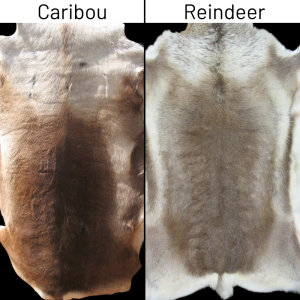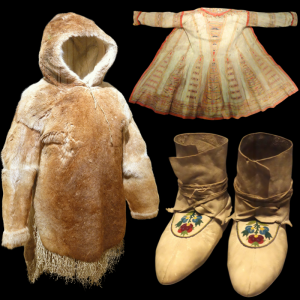Reindeer and caribou fur are essentially the same, as both come from the species Rangifer tarandus. However, the terms are used differently: “reindeer” typically refers to domesticated populations found in Europe and Asia, while “caribou” describes wild populations native to North America. Despite this distinction, their fur shares similar functional properties, such as hollow guard hairs that provide exceptional insulation. Reindeer fur is often thicker and denser than caribou fur, making it particularly suited for extremely cold climates.
Reindeer and caribou exhibit notable variations in fur color and appearance, influenced by geographic location, subspecies, and selective breeding in reindeer. Reindeer fur ranges from dark brown to nearly white, depending on breeding and environmental factors. Meanwhile, caribou fur can be light brown, reddish-brown, or grayish-white, with seasonal and geographic changes further contributing to its appearance.
Indigenous peoples, particularly Inuit communities, have long utilized caribou fur for clothing such as parkas, pants, socks, and mittens. The fur’s hollow hairs efficiently trap air, providing superior warmth. Domesticated reindeer fur has been used similarly in Eurasian cultures for traditional clothing and practical winter gear.
Caribou and reindeer fur remain influential in sustainable fashion and Indigenous design. They are often featured in modern collections that combine traditional craftsmanship with contemporary aesthetics. These garments and accessories highlight the fur’s unique texture, warmth, and eco-friendly qualities. As a renewable and biodegradable resource, caribou and reindeer fur align with sustainable practices. Indigenous artisans frequently emphasize using all parts of the animal to reduce waste and honor cultural traditions.

